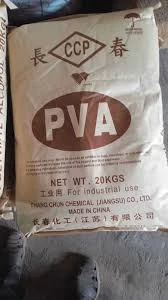Understanding Cellulose Polymer Nature's Versatile Biopolymer
Cellulose is one of the most abundant organic polymers found in nature, predominantly serving as a structural component in the cell walls of plants. Composed of linear chains of glucose units linked by β-1,4-glycosidic bonds, cellulose forms a rigid framework that provides plants with strength and stability. Given its natural abundance, cellulose has garnered substantial interest in various industries, particularly due to its biocompatibility, biodegradable nature, and the potential for renewable sourcing.
Understanding Cellulose Polymer Nature's Versatile Biopolymer
Moreover, cellulose is a key ingredient in the food industry, where it acts as a thickening agent, stabilizer, and even a low-calorie bulking agent. Cellulose derivatives, such as carboxymethyl cellulose (CMC) and methylcellulose, are widely utilized in food products, allowing for improved texture and shelf-life stability. These derivatives are particularly useful in gluten-free foods, helping to provide the necessary structure and mouthfeel that is often lacking in such products.
cellulose polymer

In the realm of medicine and pharmaceuticals, cellulose is invaluable. Various cellulose ethers are utilized for encapsulating drugs, controlling their release, and enhancing bioavailability. Additionally, microcrystalline cellulose (MCC) is often used as an excipient in tablet formulations, providing bulk and improving flow characteristics. The biocompatibility and non-toxic nature of cellulose make it an ideal candidate for applications in the biomedical field, including wound dressings and tissue engineering.
Beyond traditional applications, cellulose is gaining attention in the emerging field of nanotechnology. Cellulose nanofibers and nanocrystals are being developed for use in composite materials, offering strength and lightweight properties that can significantly enhance the performance of various products. These nanostructured cellulose materials are biodegradable and can potentially replace synthetic polymers in many applications, reducing our reliance on fossil fuels and minimizing environmental impact.
The potential of cellulose as a sustainable material has also driven research into its use as a source for biofuels. Cellulosic biofuels are derived from the lignocellulosic biomass of plants, which is rich in cellulose. This approach presents a promising avenue for reducing greenhouse gas emissions and reliance on traditional fossil fuels, providing a cleaner alternative for energy production.
In conclusion, cellulose is more than just a plant structural component; it is a versatile polymer with a wide range of applications across various industries. Its natural abundance, renewability, and biodegradability position it as a crucial material in our efforts toward sustainability. As research continues to uncover new ways to utilize cellulose, its role in advancing technology while supporting environmental stewardship will undoubtedly expand, positioning cellulose as a cornerstone of the bio-economy.
-
Rdp Powder: Key Considerations for Wholesalers in the Building Materials IndustryNewsJul.08,2025
-
Key Considerations for Wholesalers: Navigating the World of Hpmc - Based ProductsNewsJul.08,2025
-
Hpmc Detergent: Key Considerations for WholesalersNewsJul.08,2025
-
Key Considerations for Wholesalers: China Hpmc For Tile Adhesive, Coating Additives, Concrete Additives, and MoreNewsJul.08,2025
-
Crucial Considerations for Wholesalers: Navigating the World of Construction MaterialsNewsJul.08,2025
-
Key Considerations for Wholesalers Sourcing Additive For Cement, Additive For Concrete, Additive For Putty from Additive Manufacturer Shijiazhuang Gaocheng District Yongfeng Cellulose Co., Ltd.NewsJul.08,2025




